The Comet CHA-250BX vertical has been on the test stand long enough. It’s time to move it into a permanent location on the property.
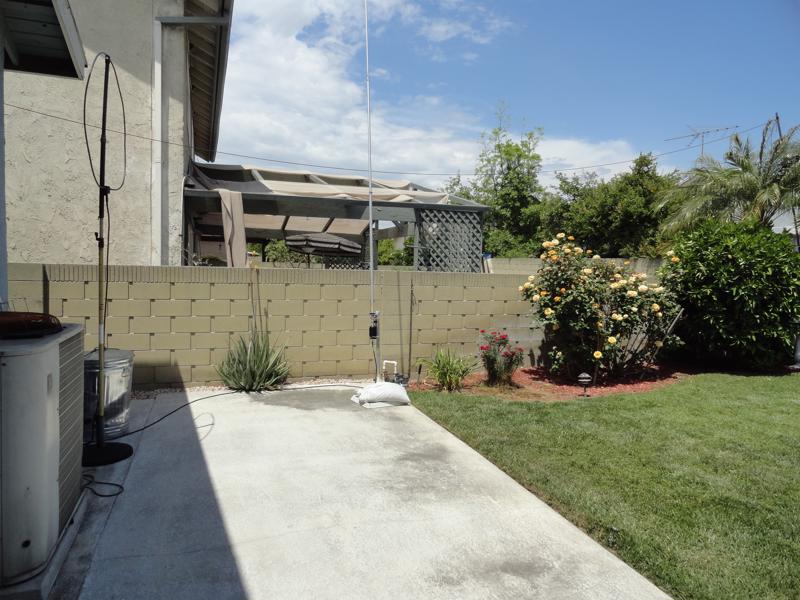
I plan to put the CHA-250BX on the top of one of the support masts that currently hold up one end of my “Height Compromised Dipole“. It’s in the corner behind a palm. I read a few eHam reviews that mentioned good results were achieved by mounting the CHA-250BX just 10 to 15ft above the ground. The antenna height affects the take-off angle, and apparently 10-15 feet is yielding some good results. I’m already working some DX barefoot via FT8, so I know the antenna performs OK. With all the testing, I now have a baseline to compare the performance against once it’s at the new height.
New Location For The CHA-250BX
If you look closely at the image below you can see the mast in the corner of the yard. I had it strapped to a huge stake that I drove into the ground. It was held in place using hose clamps. It stood up straight for years until part of the palm died and knocked it loose. I’m going to extend the current 100ft Andrew CNT-400 with another 50ft of the same coax.
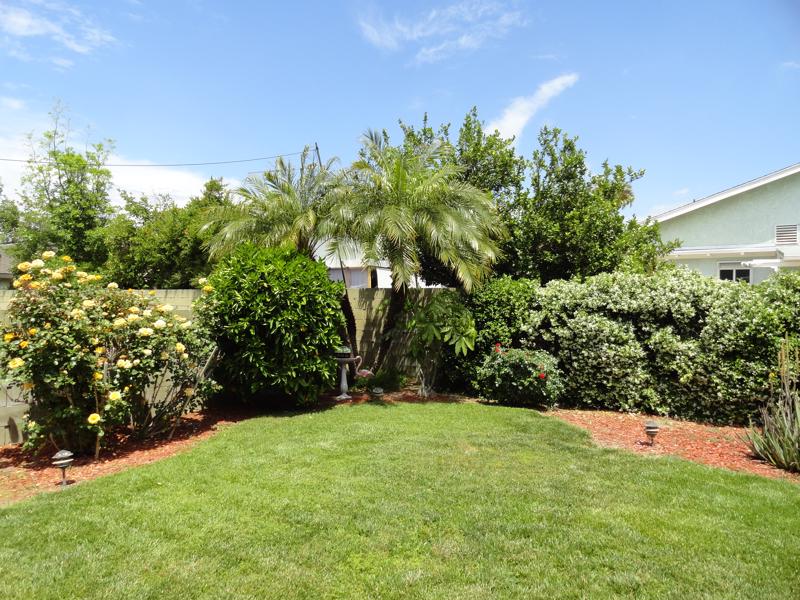
Recycle The Base Parts
The test stand is an old umbrella stand. I plan to fit the weighted base squarely into the corner against the cinder block wall, and secure it using the big stake, and the 50 lb sandbag.
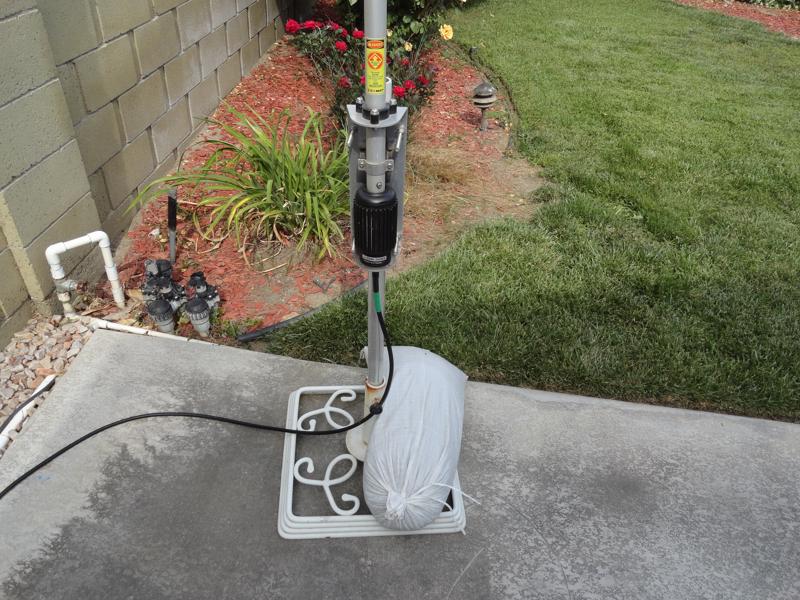
This steel mast is 15ft tall, a 5 ft section on top of a 10 ft section. When I re-deploy the mast I will switch the 5 ft section to the bottom, this way, when I have the antenna ready to go I can stand on a step ladder and insert the 10 ft section much easier. If 15 feet is judged to be too tall to stabilize, I will eliminate the 5 foot section.
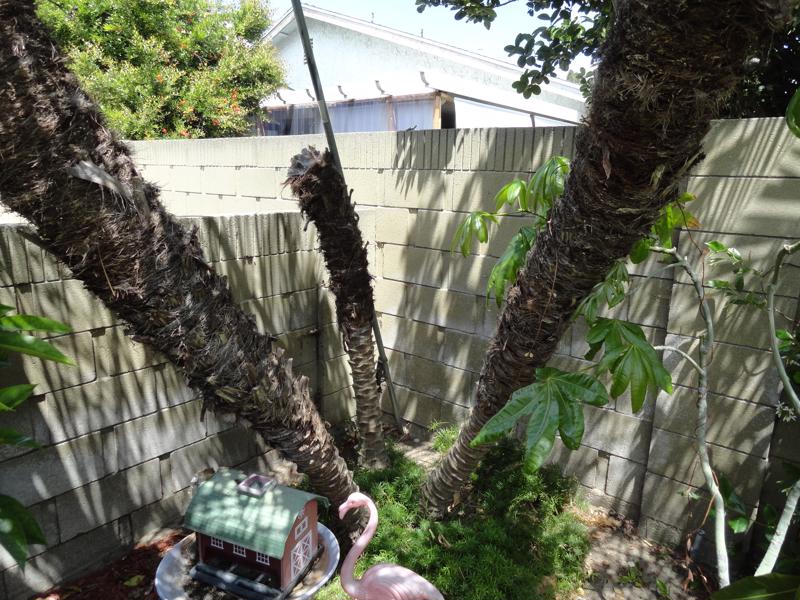
Square In The Corner
The umbrella stand will fit perfectly into this corner.
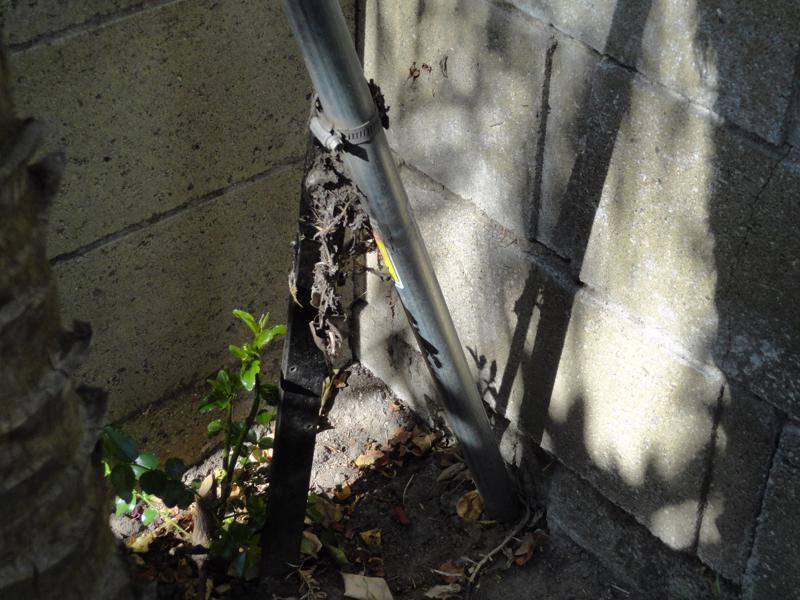
I have some mollies leftover from a recent flower trellis repair. I can use some of them as anchors for the steel straps if it looks like I’ll need them..
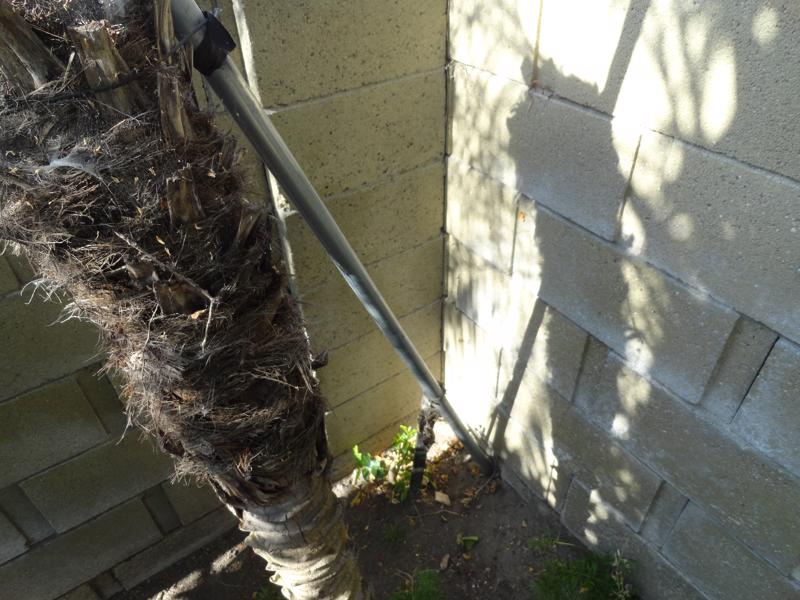
Comet CHA-250BX At Ideal Height
The 5 ft section will be reinforced using two sets of steel straps (at 1 and 5 feet above ground), and an additional guy line to reduce or eliminate any sway. I’ll add a pulley to the top for the dipole, and hang a weight from the end insulator to reduce stress on the mast when it’s windy. I’m also going to devise a wooden support beam that will go in between the mast and the 90 degree concrete corner. I’ll be able to tighten the steel straps to keep the mast firmly against the beam. I’ll square one end of the wooden beam for the corner, and make a cutout for the mast diameter on the other end. This should be a rock solid base. The antenna is 23.8 feet tall, and weighs 7 lbs. with a 67 mph wind rating.
I have a spare ground rod which I will install at the base.
Update: Sat 05/18/19
XYL: Where Did You Put That Antenna?
What Antenna?
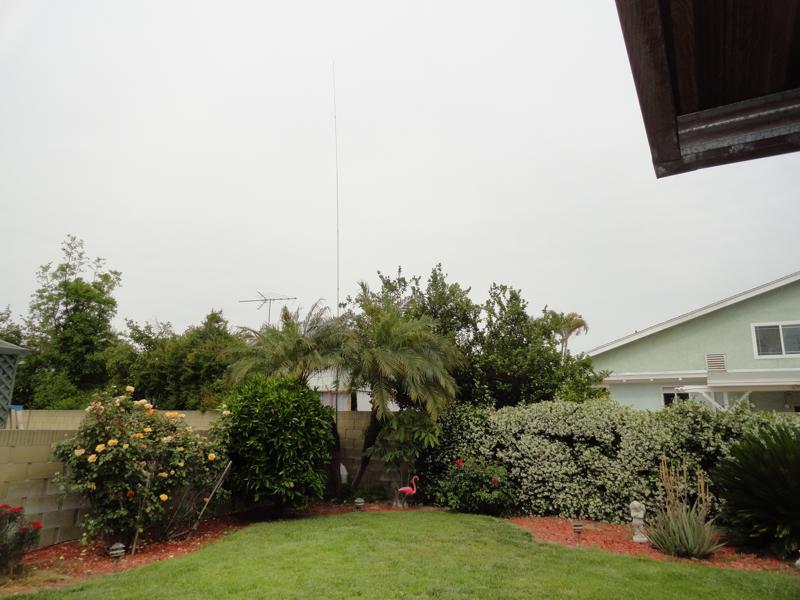
Tucked away nicely in the corner of the yard! Barely noticeable to the XYL.
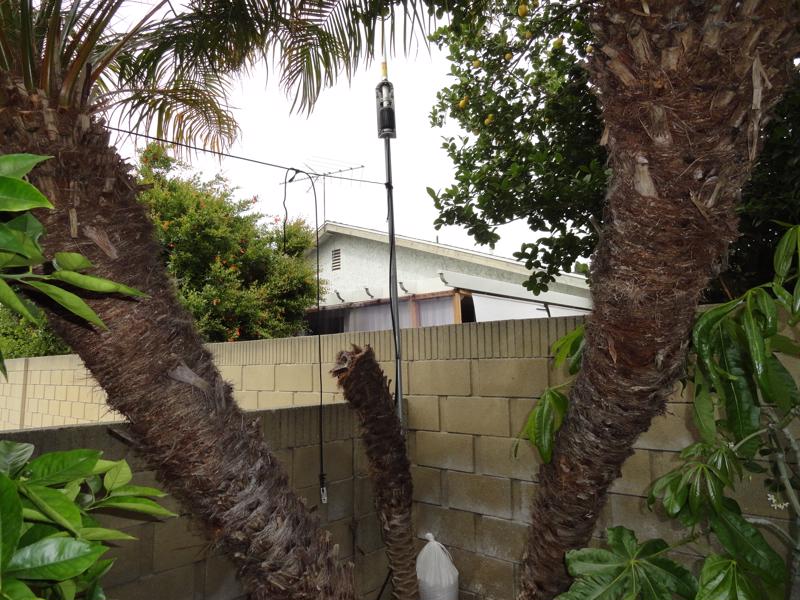
There are several articles out there about antenna height versus take-off angle. There seemed to be some consensus that a height of 3 meters above ground offered some improvement in performance.
Another article I found expressed a view stating what little value TOA really has when it comes to verticals.
I decided the antenna would not be stable at the proposed height. Its proximity to neighbors property is also a factor. So instead of 15 feet, I mounted it at 10ft (3m)
OK. Let’s see what kind of results we get. The antenna had to move anyway, so hopefully we get some good results.
update: 05/20/19
I leave two instances of WSJT-X FT8 running 24/7. Then, when I get home from work, I scroll back through the RX windows to see what was heard while I was away. I’ve been running it this way since I first put up the CHA-250 vertical back in March 2019.
INSTANT RESULTS
I’d left it on 40m since yesterday afternoon (just over 24 hours) and came home today to find EU callsigns in the FT8 console for the first time. Lots of DX calls, among them Italy, Croatia, Morocco, Mauritius, Ecuador, Japan, Indonesia, Philippines, New Zealand and on and on. Keep in mind this is just the past day on 40m! I never saw anything like this when the antenna was on the test stand.
If you have your CHA-250BX mounted on the ground give it a try on a 10ft mast! Let’s see how many of these newly heard DX callsigns can be worked!
the bonus: antenna separation
An added bonus! The increased antenna separation between the vertical and the RX Loop has eliminated the de-sense I was seeing on the 6700’s HF RX. As I work FT8 I am usually listening to 80m on the 6700/W6LVP Loop. The antenna separation is now sufficient that the FT8 transmissions no longer interfere with other HF RX in the shack. Perfect world.
it Turns out to be a major upgrade!
EA3KU 05/21/2019 05:15 FT8 100w 40M Sent -11 Rcvd -20
F6AOJ 05/25/19 04:28 FT8 100w 40M Sent -17 Rcvd -22
EA8TH 05/2519 06:23 FT8 100w 40M Sent -19 Rcvd -22
WSJT-X was installed on 03/09/19 and my DX contacts up to this point included JA’s and ZL’s and VK’s, but I hadn’t copied any EU callsigns before raising the antenna. Now I’m working into EU, so I am very pleased with this upgrade.
update 03/09/20 wsjt-x results
At this point, I’ve worked thousands of FT8 QSO’s and some great new DX. All you need is a 100 watt radio and this inexpensive antenna in order to work the world!